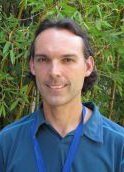Projects
BICEP3

BICEP3 will measure the polarization of the cosmic microwave background (CMB). BICEP3 has the same great advantages as BICEP2 or the Keck Array to be located at the South Pole, the best location on Earth to observe microwave radiation from space. It shares with the Keck Array the impressive sensitivity of 2560 TES bolometers working simultaneously. It will add two key features to the successful performance of BICEP2 and the Keck Array. Very importantly, it is working at a different frequency, centered at 95 GHz, providing an independent data set to be cross-correlated with the 150 GHz data from BICEP2 and the Keck Array. Second, its field of view will be 3 times larger than that of BICEP2 and Keck. This will increase its speed to get the basic science results on Cosmology and provide a means to test for cosmic variance. It will be installed in 2014. It is expected that in a few months will be comparable to BICEP2 and Keck Array data.
People
Origin of the Universe - Deputy Program Chief Technologist, NASA Exoplanet Exploration Program

